This is the first of three tutorials explaining how to run a simple Server 2012 Remote Desktop Services environment. This is ideal for companies with less than (say) 20 concurrent users if you source good hardware.
BACKGROUND:
It used to be that all you need to do to get a Terminal Services server running was:
- Install Server 2000 / 2003 / 2008
- Add in Terminal Services
- Add in your Terminal Services licensing
- Install your applications
- Lock down the Terminal Server / RDS using Group Policy
Now, those days are gonzo! But don’t dispair although it is much more complex with Session Brokers, RD Gateways, the steps make sense and you can do sooooo much more than you could before.
I blew 4 hours over two days trying to get just the core RDS/Terminal Services install complete before realizing that I had misunderstood the new process. With this process you should be up and operational within 1 hour.
This article will provide as fast an install RDS solution as I can create with references to other materials where I think you might want them. So, lets get started.
PREFACE – VMs:
I hate running anything on physical boxes, other than HyperV hosts so in my case, I have installed Server 2012 on a physical server, then added the Hyper-V roll and then created a new VM which is where we will start from.
Also you need to understand that the fundamental difference between REMOTE DESKTOP SESSION HOSTs and REMOTE DESKTOP VIRTUALIZATION HOSTs. Session Hosts are the old school Terminal Sessions we all love. Desktop Virtualization Hosts, host VM’s, like entire Windows 7 desktops. See my short explanation on this if you are confused. We want a SESSION HOST.
Note that I confirmed with Microsoft Partner Support (yes, I am a partner) that it is supported and recommended to use Dynamic Disk and Dynamic Memory if this is a low user RDS implementation. I define low use as less than 10 concurrent users running standard office apps, like Word and Publisher.
INSTALL AND CONFIGURE A SERVER 2012 REMOTE DESKTOP SERVICES, SERVER:
Click through the screen shots at the end of this post which make the whole process largely self explanatory.
- As per the preface, install SERVER 2012 in a Virtual Machine (in my case Hyper-V), complete any core configuration like giving it a static IP (if you choose), and patch it via windows update.
- In SERVER MANAGER, click MANAGE, ADD ROLES AND FEATURES
- On INSTALLATION TYPE, select REMOTE DESKTOP SERVICES INSTALLATION
- On DEPLOYMENT TYPE, select QUICK START
- On DEPLOYMENT SCENARIO, select SESSION-BASED DESKTOP DEPLOYMENT
- On SERVER SELECTION, just click NEXT
- Complete the wizard enjoy the reboot
- After the reboot WAIT. A minute or two after logon the COMPLETION progress window will appear and it will take several more minutes to finish.
.
Congratulations. You should now have a minimally functional, old school Terminal Services, RDS install. Lets do some basic configuration.
. - Launch your browser from any domain PC and type HTTPS://SERVER-HOST-NAME\RDWeb (note the “S”)
- Click CONTINUE TO THIS WEBSITE (because you don’t have a public certificate installed yet)
- Login on the WORK RESOURCES page.
.
Congratulations, you should see a few basic apps like the Calculator and Paint. Go ahead and try them. You will know you are running them from the RDS Server because they have the Fugly blue Windows Server 2012 frame… soooooo ugly.
.
Now lets add some apps like TASKMANAGER
. - In SERVER MANAGER, click REMOTE DESKTOP SERVICES
- Click QUICKSESSIONCOLLECTION from the menu on the left
- In REMOTEAPP PROGRAMS, click the TASKS drop down box (in the top right corner) and select PUBLISH REMOTEAPP PROGRAMS
- Select TASK MANAGER from the list and click NEXT then PUBLISH then CLOSE
.
Congratulations, you just published an app that will appear on your RDWEB site
.
Now lets add a program that is NOT already in the list and requires some addition settings. In this case we will add INTERNET EXPLORER and set it to go to a specific page when launched.
. - In REMOTEAPP PROGRAMS, click the TASKS drop down box (in the top right corner) and select PUBLISH REMOTEAPP PROGRAMS, then click the ADD button at the bottom
- type \\<SERVER HOSTNAME>\c$\program files\internet explorer\iexplore.exe into the FILE NAME FIELD, then click NEXT, PUBLISH and CLOSE
.
I found this quite confusing at first but you have to use a full UNC path to the EXE, and yes standard, restricted, non-admin users will be able to launch the app.
. - Now RIGHT CLICK on IEXPLORE.EXE and select EDIT PROPERTIES
- De-expand/close GENERAL, then expand PARAMETERS, select ALWAYS USE THE FOLLOWING and enter http://www.URTech.ca, then click OK
.
Note that you could have changed the icon and / or restricted access to specific users in this same PROPERTIES window.
. - Verify it worked by surfing to your HTTPS://<<SERVER-HOST-NAME>\RDWeb site. If you already had it open, you will need to refresh the page.
.
Now lets fix the most common issue with Remote Desktop Servers / Terminal Servers, which is what to do with user data for things like the Destktop, My Documents, profile data and user registry settings.
.
Microsoft has introduced a wonderful new feature that solves these issues WITHOUT the hassel and problems of Roaming Profiles or Folder Redirection. This new feature is called USER PROFILE DISKS and, put simply, they are (often tiny) user specific VHD’s that contain only the users information. USER PROFILE DISKS can be accessed from any other REMOTE DESKTOP SERVICES server you have on the domain, should you choose later on to add more servers and turn our tidy single server deployment into a farm… AWESOME!
. - Go to COMPUTER on the server (i.e. not in SERVER MANAGER) and find a location with some spare disk space and create a folder called something like C:\UserProfileDisks . Then share that folder. I hate seeing shares so I made mine hidden by adding a $ and that works without problem.
- Go back to your QUICKSESSIONCOLLECTION PROPERTIES, click on the TASKS drop down in the top right of the PROPERTIES window.
- Expand USER PROFILE DISKS, click ENABLE USER PROFILE DISKS and type in the the UNC path to your new share in my case \\<SERVER NAME>\UserProfileDisks$, and click OK
- You can verify your settings again via the RDWeb site and then notice that after you connect for the first time, that there is a shiny new VHDX file in your share (in my case C:\UserProfileDisks$)
.
User profile disks are MUCH faster than roaming profiles, highly unlikely to get corrupted, migratable in the future. THIS is an excellent explaination of User Profile Disks if you want more details.
. - Now you nee to install licensing for your RDS Server. I bought mine through Open License and this is how I added it.
- Use Server Manager to add the REMOTE DESKTOP LICENSING role (see the screenshot; again I am not going to waist your time with CLICK NEXT details)
- On the REMOTE DESKTOP SERVICES, OVERIEW page click the green + on RD LICENSING
- Select your server and click the black arrow to add it to SELECTED, then NEXT, then the ADD button on CONFIRM SELECTIONS
- Launch the RD LICENING MANAGER (strangely this is NOT a link in SERVER MANaGER, you need to start it like any other program)
- Right click on your servers host name and select ACTIVATE SERVER, then follow the wizard
- Click on your servers host name and select the REVIEW link, then click the ADD TO GROUP button and CONTINUE button. This will authorize this server to give out RDS\TS Licenses in your Active Directory.
- In REMOTE DESKTOP SERVICES – OVERVIEW, click TASKS, EDIT DEPLOYMENT PROPERTIES and set the RD LICENSING MODE, in my case I choose PER USER
Note that If you want to install other programs (like say Office) you should use the INSTALL APPLICATION ON REMOTE DESKTOP SERVER applet that is added to your RDS server when you add RDS. I am not going to show this here as I assume you are all capable of clicking NEXT.
You should now have a fully functional Remote Desktop Server.
OTHER ITEMS:
I will have a (shorter) peice on:
- How to configure a Remote Desktop Gateway
- How to Lock Down a Server 2012 Remote Desktop Server
Interesting Answers to RDS questions I have found while ripping through various blogs and articles:
- Why would I use a REMOTEAPP when I could use a REMOTE DESKTOP? RemoteAPP’s use substantially fewer resources than a full remote desktop.
- Is there a way to have a Remote Desktop Servers, RemoteAPP use LOCAL programs. i.e. Can I click a .PDF linked in a RemoteAPP and have it open Adobe Reader on MY computer – NO, See THIS post.
ADDITIONAL RESOURCES:
- What’s New in Server 2012 Remote Desktop Services
- Microsoft’s Remote Desktop Services, “Everything on one page”, page – includes planning, labs, licensing…
- Remote Desktop Services Deployment Guide for Server 2008 R2 – In March 2013, I have checked with Microsoft Partner Support and confirmed that Microsoft has NOT updated their RDS / TServer documents to reflect changes available in Server 2012, so this is as good as it gets. See THIS thread if you want to complain.
- Microsofts VDI Page
- Understand and Troubleshoot Desktop Virtualization in Windows Server 8 Beta.docx
- BOOK – Windows Server 2008 R2 Remote Desktop Services Resource Kit
-
Windows Server 2012 VDI White Paper – VERY Helpful and relatively short
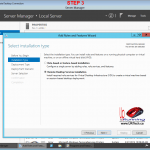
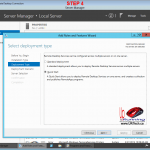
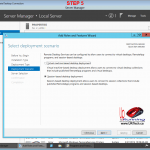
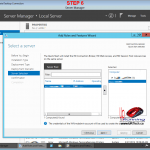
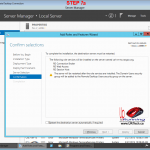
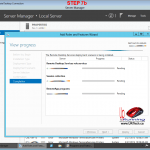
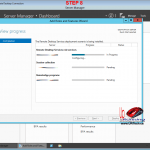
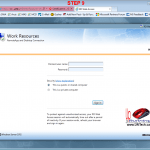
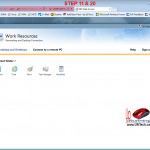
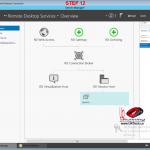
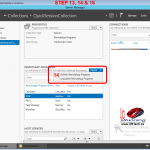
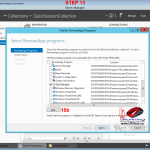
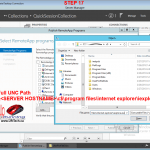
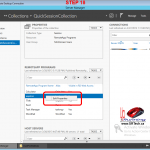
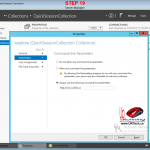
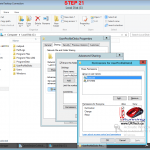
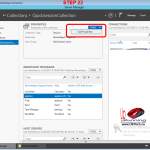
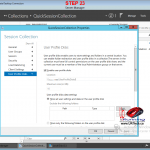
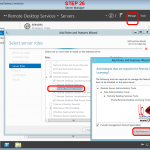
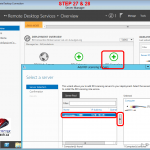
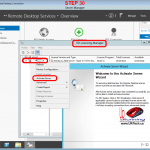
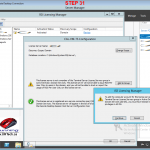
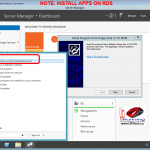
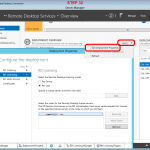


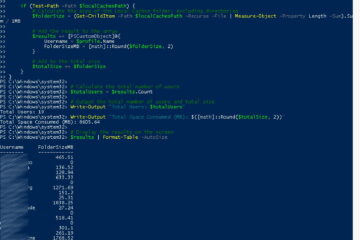
13 Comments
Kelly C. · September 9, 2015 at 11:24 am
Ian,
Thank you so much for this post. After a few frustrating hours trying to work this out, I ran across your post. Clear, easy to follow; detailed where necessary and brief otherwise. Made the process a breeze!
Cheers from Switzerland.
Frank Farero · June 2, 2014 at 5:25 am
Hi,
Like the above post from Jim S. my client is currently running a single SBS 2011. Their requirements are pretty simple at this point in time. They have a M.S. Access Database in which remote users (20 at the most) will be remoting in to input their time on various projects.
I have spec’ed out an additional server for 2012 installation and RDS configuration along with the appropriate number of RDS and Server CALs’.
We just want the field folks to remote desktop into the 2012 for project time keeping purposes only.
I believe that a “A Record pointing to the public IP address. Then the appropriate port configured in the router. Am i on the right track here?
Thanks,
Frank
Jim S. · March 25, 2014 at 5:58 am
Ian, I have an existing SBS 2011 network. I installed the 2012 server on a new box, joined it to the SBS and everything is good. I can access the server via Remote Desktop from within and outside the network. What method (roles) do I install to have my users access published applications via RemoteApp?
Ian Matthews · March 30, 2014 at 4:13 pm
Hi Pireotis 🙂
As you know SBS 2011 does not support Remote Desktop for user… just for administrators. If you have installed an additional server using Server 2012 Standard or Enterprise you should have no limitations and should follow the instructions on in this thread:
2.In SERVER MANAGER, click MANAGE, ADD ROLES AND FEATURES
3.On INSTALLATION TYPE, select REMOTE DESKTOP SERVICES INSTALLATION
4.On DEPLOYMENT TYPE, select QUICK START
5.On DEPLOYMENT SCENARIO, select SESSION-BASED DESKTOP DEPLOYMENT
6.On SERVER SELECTION, just click NEXT
7.Complete the wizard enjoy the reboot
I hope this helps.
Jim S. · April 22, 2014 at 12:29 pm
Hello Ian and thanks for your help.
Sorry about the delayed response (I was away) but after I followed your instructions the question still remains: How do my users access the published apps on my added 2012 RDS server from the internet?
Do they go through the SBS 2011 or do they log in directly to 2012 RDS?
It appears that neither of these two methods are working and I don’t know if I have to do something on the router or some other setting in either server. I would appreciate some guidance.
Thanks.
Charles · September 18, 2013 at 6:52 am
Hi Ian, has traditional published desktop gone ? from a server 2012 session host (ie not one running VDI) is it possible to get server 2012 to function like a server 2008r2 published desktop so that you can crank up a RDS client and login on port 3389 et al.
Charles · September 19, 2013 at 5:02 am
Yes, its all there (published desktop) all the familiar 2008R2 tools for terminal server are gone and replaced by the new funky server manager interface. Nothing like a new OS version and you find the goal posts have moved. I LIVE FOR THIS (groan..)
Ian Matthews · November 3, 2013 at 2:47 pm
Yes, the traditional published desktop links are gone. I have not played with this much beyond what I wrote as it is working perfectly for my application.
derek · August 27, 2013 at 4:30 am
Newbie here. I have a fresh install of windows server 2012 and I get hooked on the first step.I click the remote desktop services installation option and I get an error “The local server must be joined to the domain to complete the Remote Desktop Services installation option”
I only have the one server in the environment it can’t be possible that I am supposed to have another machine just so it can be a DC to this one can it??? This is doing my head in. All I want is a machine that a few users (less than 10) can log into and run the accounting/invoicing software .package for the business.
Ian Matthews · August 31, 2013 at 6:58 pm
That is the case. Server 2012 Remote Desktop Services requires it to be connected to a Domain. However there are two comments I would make about your situation:
1: you can use a standalone Server 2012 (not connected to a Domain) to be remotable if the user is an ADMINISTRATOR on that server. You can have a maximum of 2 ADMINISTRATORS connected at the same time. Given that you only want a few users in for a few hours this might solve your issue. I don’t have a server 2012 in front of my at the minute, but from memory the process is launch SERVER MANAGER > click LOCAL SERVER > click ENABLE on REMOTE DESTKOP (near the top left).
2: I would just create an HyperV Virtual Machine that runs Server 2012 as a Domain Controller. This is very fast and easy for an experienced tech (I could put this together in 30 mins) but if you have never playing with HyperV you might have some issues… although it really is pretty easy. It is beyond the scope of this article, but you can hit YouTube and what a few 5 minute how-to videos to get you through it.
I hope this helps.
Ayaz Tutla · October 8, 2014 at 2:00 pm
You can do a Role based install and then select the Remote desktop services role to install it as a Standalone TS server
SOLVED: The Flush and Hold Writes Operation on Volume C: Timed Out While Waiting For a Release Writes Command – Up & Running Technologies, Tech How To's · February 21, 2024 at 10:39 am
[…] We recently had a client seeing this error message appear repeatedly but intermittently over the last few months. We found the error related to Volume Shadow Copies (Event ID 5 & 8, in Event Viewer), and often appeared on Domain Controllers and Terminal Servers / RDS. […]
SOLVED: VIDEO: PowerShell Script To Delete Only Account Unknown User Profiles – Up & Running Technologies, Tech How To's · November 8, 2023 at 5:46 pm
[…] from users that have been deleted in Active Directory or on your local computer. If you run an RDS server or have had alot of administrators, you can have a lot of dead profiles on your Windows Server, […]